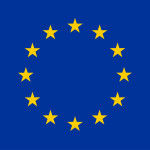Multiply EU-Horizon 2020 project
“MULTIscale SENTINEL land surface information retrieval Platform”
With the start of the SENTINEL era, an unprecedented amount of Earth Observation (EO) data has become available. A consistent but extendible and adaptable framework to integrate observations from different sensors in order to obtain the best possible estimate of the land surface state was missing. MULTIPLY proposed a solution to this challenge.
The project developed an efficient, fully generic and fully traceable platform that uses state-of-the-art physical radiative transfer models, within advanced data assimilation (DA) concepts, to consistently acquire, interpret and produce a continuous stream of high spatial and temporal resolution estimates of land surface parameters, fully characterized. These inferences on the state of the land surface are the result from the coherent joint interpretation of the observations from the different Sentinels, as well as other 3rd party missions (e.g. ProbaV, Landsat, MODIS).

Summary of the various radiative transfer models (i.e. forward operators) that will be explored within MULTIPLY and their stages of maturity
The framework allows users to exchange components as plug-ins according to their needs and builds on the EO-LDAS concepts, which have shown the feasibility of producing estimates of the land surface parameters by combining different sets of observations through the use of radiative transfer models. The data retrieval platform will operate in an environment with advanced visualisation tools.

Users were engaged and trained throughout the proces . Moreover, user demonstrator projects included applications to crop monitoring & modelling, forestry, biodiversity and nature management. Another user demonstrator project involves providing satellite operators with an opportunity to cross-calibrate their data to the science-grade Sentinel standards.
The project ran from 1st January 2016 till 31 December 2019.

This project has received funding from the European Union’s Horizon 2020 research and innovation programme under grant agreement No 687320
